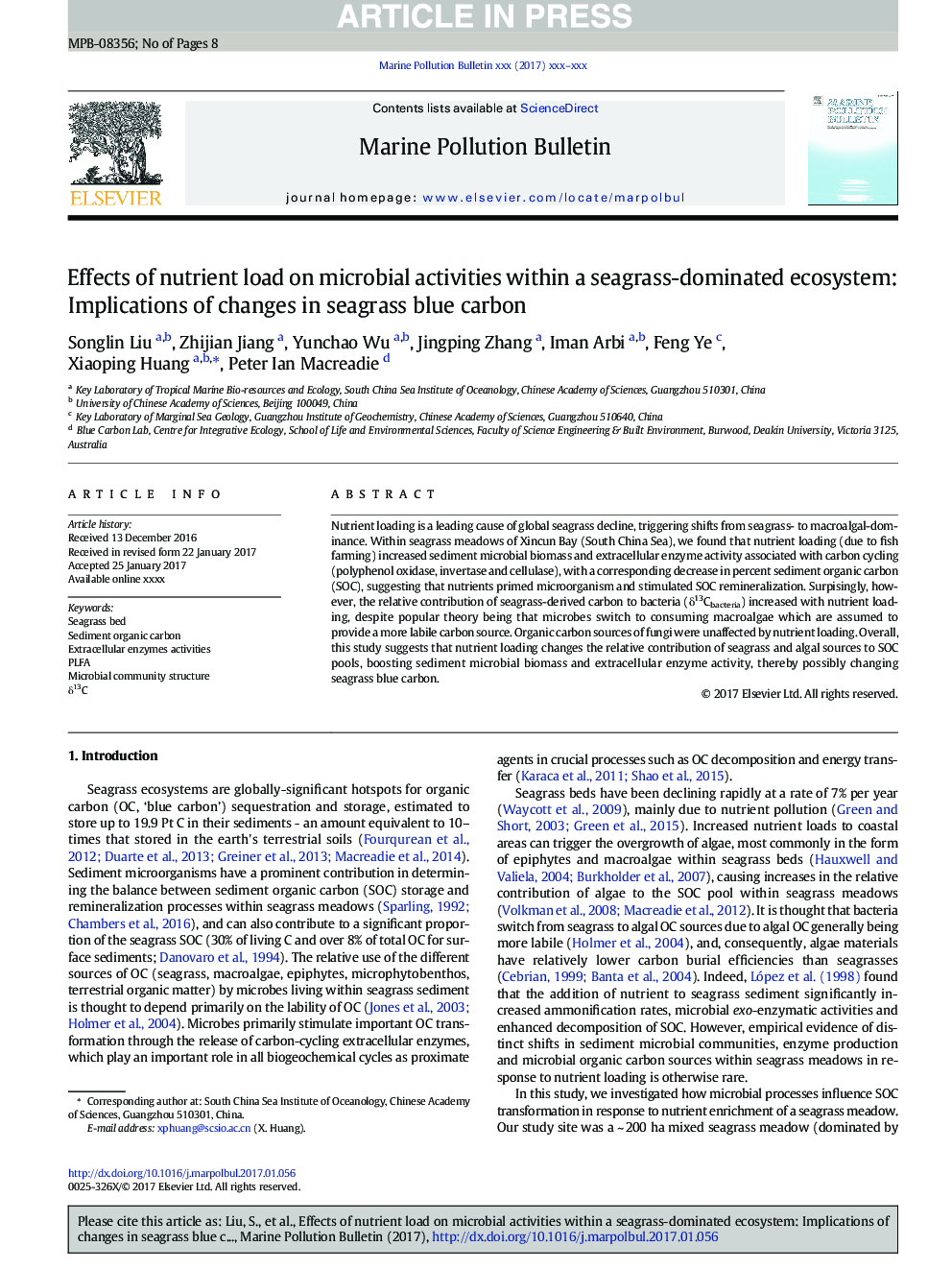| Article ID | Journal | Published Year | Pages | File Type |
|---|---|---|---|---|
| 5757531 | Marine Pollution Bulletin | 2017 | 8 Pages |
Abstract
Nutrient loading is a leading cause of global seagrass decline, triggering shifts from seagrass- to macroalgal-dominance. Within seagrass meadows of Xincun Bay (South China Sea), we found that nutrient loading (due to fish farming) increased sediment microbial biomass and extracellular enzyme activity associated with carbon cycling (polyphenol oxidase, invertase and cellulase), with a corresponding decrease in percent sediment organic carbon (SOC), suggesting that nutrients primed microorganism and stimulated SOC remineralization. Surpisingly, however, the relative contribution of seagrass-derived carbon to bacteria (δ13Cbacteria) increased with nutrient loading, despite popular theory being that microbes switch to consuming macroalgae which are assumed to provide a more labile carbon source. Organic carbon sources of fungi were unaffected by nutrient loading. Overall, this study suggests that nutrient loading changes the relative contribution of seagrass and algal sources to SOC pools, boosting sediment microbial biomass and extracellular enzyme activity, thereby possibly changing seagrass blue carbon.
Related Topics
Physical Sciences and Engineering
Earth and Planetary Sciences
Oceanography
Authors
Songlin Liu, Zhijian Jiang, Yunchao Wu, Jingping Zhang, Iman Arbi, Feng Ye, Xiaoping Huang, Peter Ian Macreadie,
